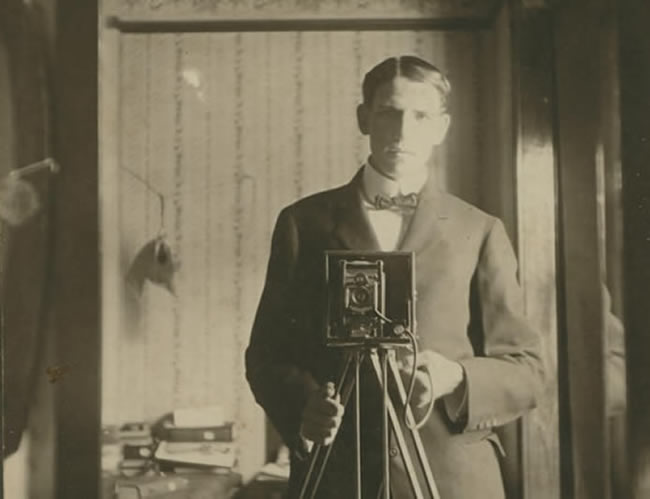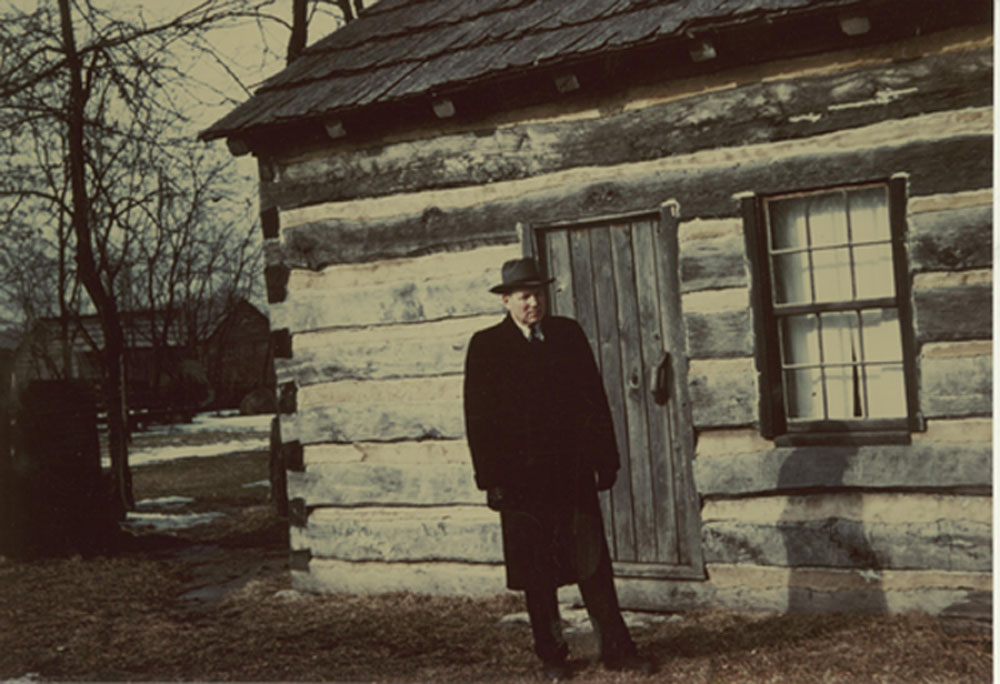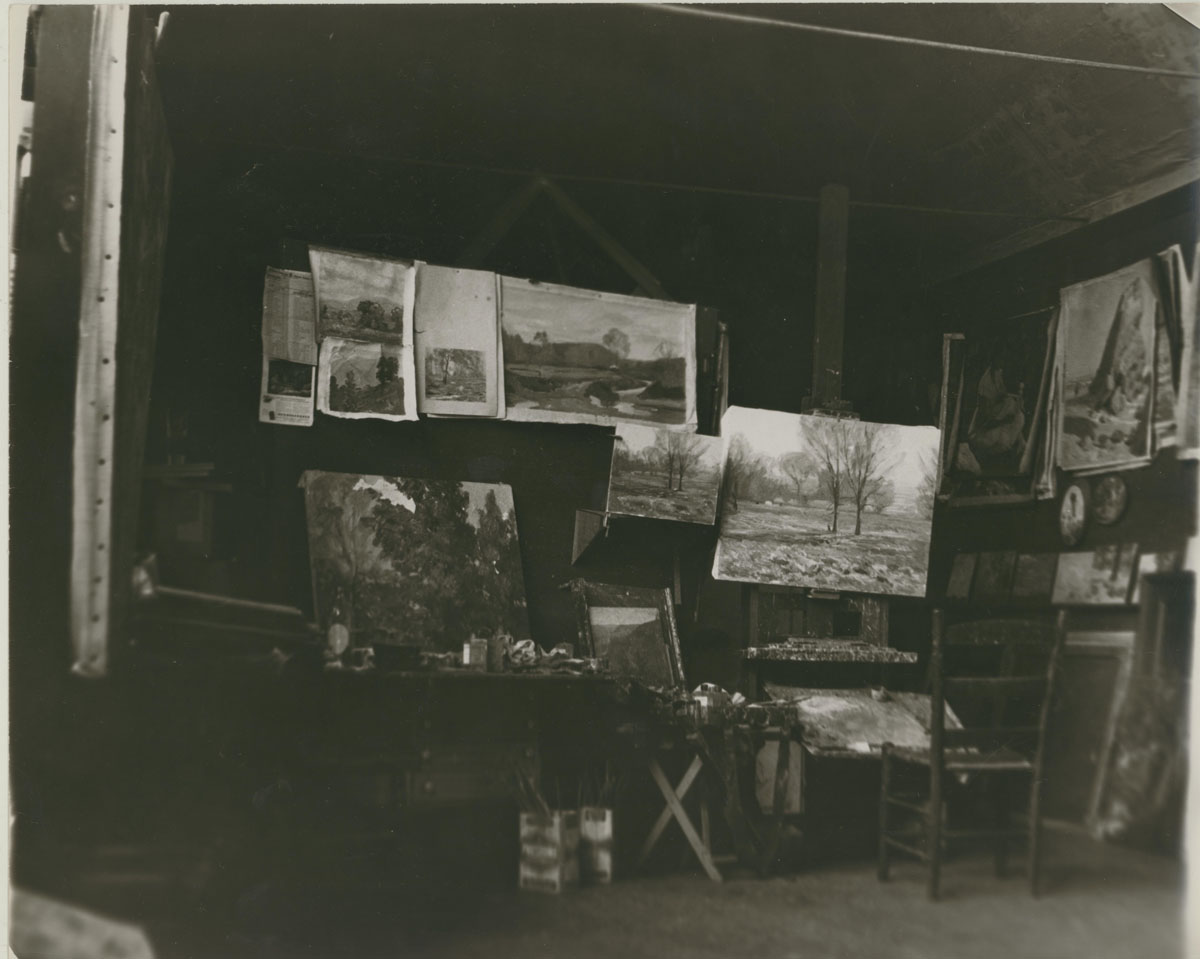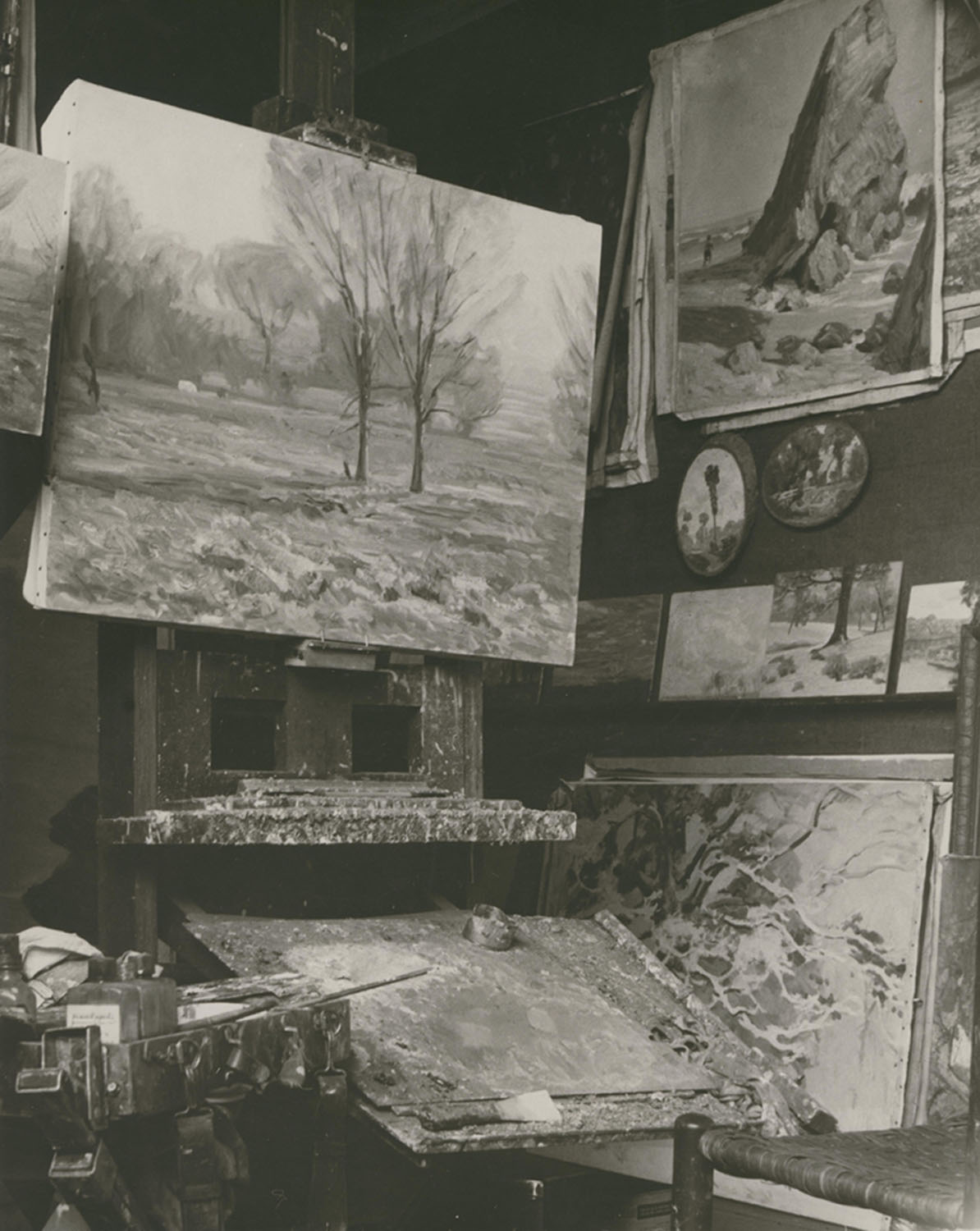Paul Turner Sargent biography
The Sargent family planted their roots in Illinois years before Paul Sargent began painting the landscape. His grandfather, Stephen Sargent, was born in New Hampshire in 1797. After moving around from job to job, he eventually bought land in Coles County and built a house with his wife, a widow named Nancy Chenoweth. It was in this house that Paul Sargent’s father was born. Both his grandfather and father were deeply rooted in Illinois agriculture, and Stephen Sargent was a well-known entrepreneur for his time. This house and the surrounding acres are common images in Paul Sargent paintings, and clearly represent the passion the Sargent family had for the land and soil of Illinois.
Paul Sargent was born July 23, 1880, in a house in Hutton Township, to John and Maria Anna Turner Sargent. His grandfather’s original home was right in the backyard. There are many moments in young Paul Sargent’s life that influenced him to be the painter he became. The earliest of these was from one of his teachers at the country school, John M. Harlow. It was in Harlow's class that Sargent’s talent was first noticed when sketching famous works of arts. Mr. Harlow encouraged young Sargent to show his drawings to other students in the class. In his biography on Paul Sargent, youngest brother Samuel Sargent claimed this seemingly small event was an “encouraging influence in his young life.” At age thirteen, Sargent seriously injured a bone in his heel while jumping from a hayloft, and he was left bedridden to recuperate. During this time, his sister Pearl lent him her oil paints, which brought out a passion for painting.
Sargent’s continued his studies at the Brethren College in Westfield, Illinois for a year. He then transferred to the Eastern Illinois State Normal School of Charleston, Illinois in 1900, which is now Eastern Illinois University. After graduating six years later, he left his hometown to enroll at the Art Institute of Chicago. Sargent did a lot during his studies at the Institute, often being part of advanced classes. During this period of time, he was inspired by larger canvases than what he is known for today. This styling inspired Sargent to paint a few murals around the city of Chicago. These included: a genre scene of the George Rogers Clark crossing into Illinois, located at the John M. Smyth school; a scene from Robin Hood at the Crippled Children’s House; and Captain John Smith landing at Jamestown with colonists, located at the Sherman Park Field House.
By 1920, Sargent returned to Hutton Township, where he would spend the rest of his life. Gay Anderson, a local woman who saw a collection of Sargent paintings at the Art Institute in Chicago, requested him to bring his newest paintings to her house. Sargent sold his first painting, and also found a sponsor, with Miss Anderson.
Paul Sargent often traveled to different states for inspiration, as well as for new opportunities for teachings and galleries. In 1920, Adolph Shulz invited Sargent to Brown County, Indiana. It was during his numerous visits to the area that Sargent became a member of the Brown County Artist Colony. The colony was created in the early 1900s as a group of academically-trained artists, all with a passion for scenic landscapes and the distinctive qualities of Indiana. At its height in 1931, the Brown County Artist Colony had over 2,000 people visiting the gallery in one day. In the 1940's, as the original founding members began to fade away and new trends in art began to take over, the association ceased to exist.
Though Coles County became Sargent’s muse for his most well known landscapes, he also frequently traveled during the summers to view and record different types of landscapes through his paintings. These travels included Michigan, Tennessee, the Missouri Ozarks, Idaho, California, and Florida.
Yet, even with all his travels, Paul Sargent always came back home. In 1920, he built a studio off of his family home in Hutton Township, (though much of the real work was done outside, as close to nature as possible). Sargent was a true outdoorsman who wanted to paint the nature that surrounded him, and what better place to do that than outside. His landscapes show a deep appreciation for his homestead. Sargent had a unique passion and understanding of the prairie landscape that is Coles County, and it showed in each and every one of his paintings. Paul Sargent passed away on February 7, 1946 in the same house in which he was born.
Bibliography
Goodrick, Evelyn. "Paul Sargent: The Prairie as Landscape." Illinois Magazine, September - October 1987, 5-8.
“Paul Sargent, Robert Root & The Brown County Artist Colony.” Tarble Arts Center Eastern Illinois University. January 28- February 26, 1995 (Exhibit Brochure)
Sargent, Paul. The Autobiography of Paul Turner Sargent Written in 1933. Charleston, IL: Tarble Arts Center, Eastern Illinois University, 1999. Print.
Sargent, Samuel. “Paul Turner Sargent” Biography. Unpublished.













